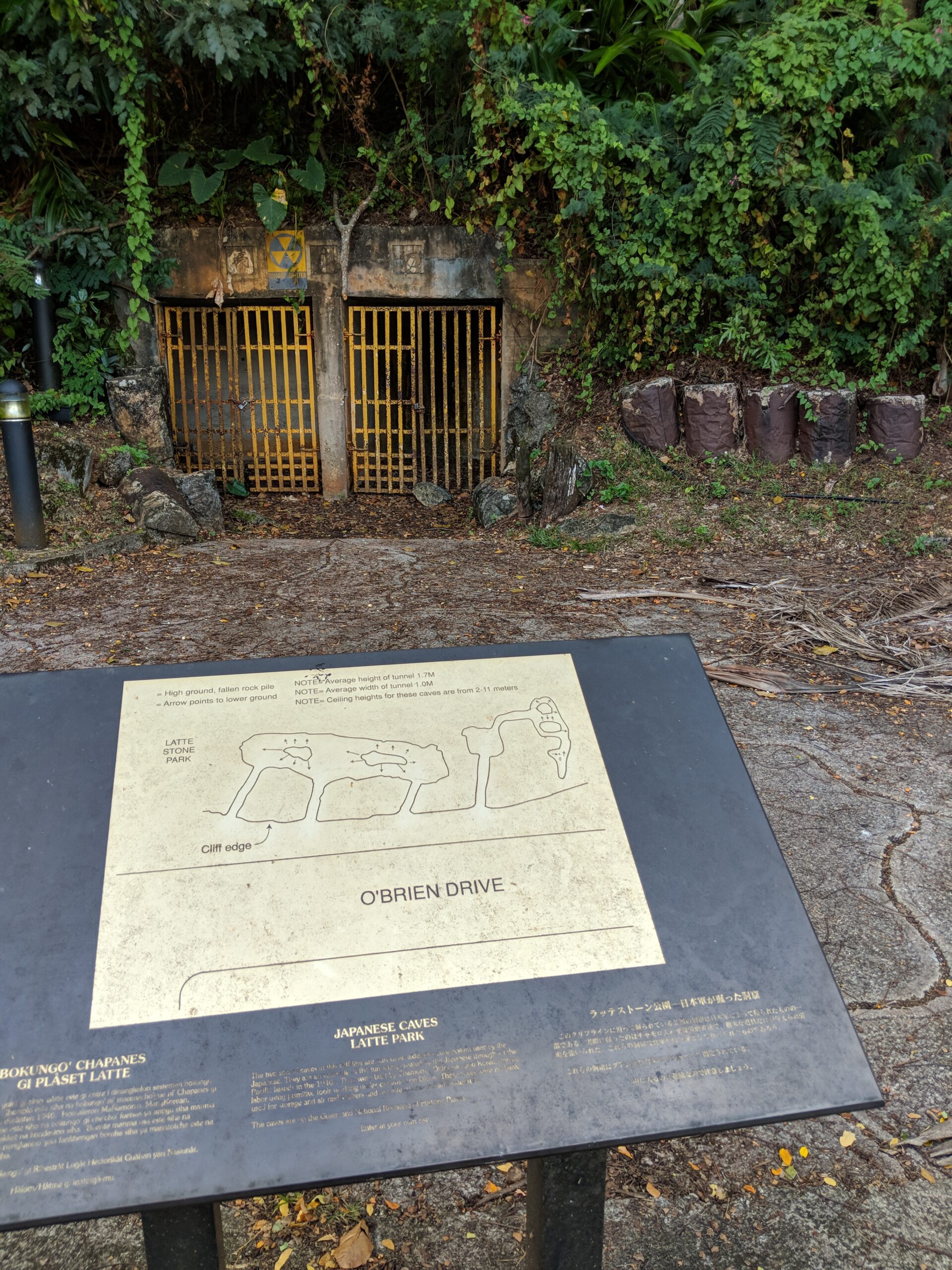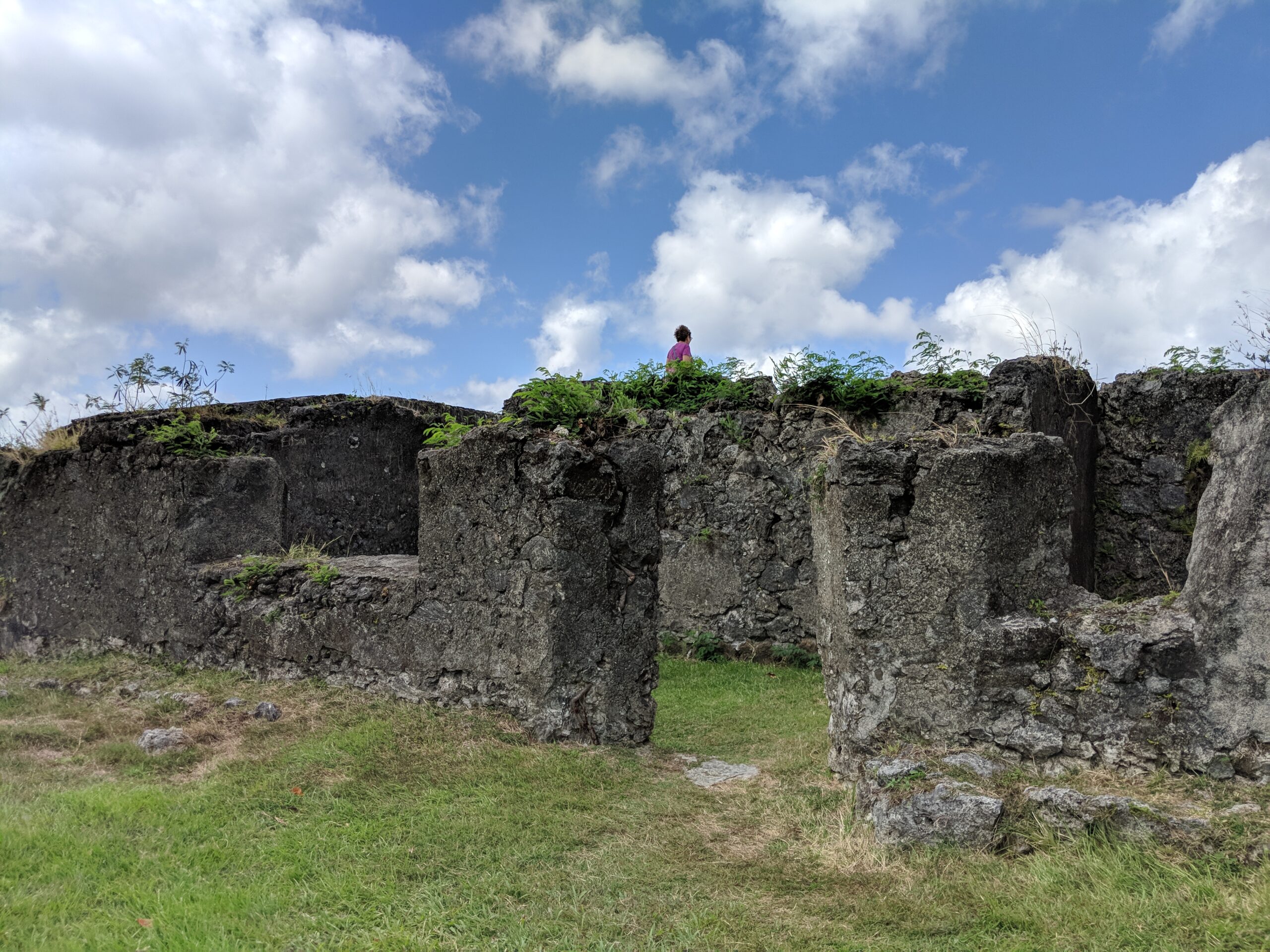Guam has a Chamorro Village, as well as a park to feature some of the island’s Latte Stones. Both are accessible to visitors.This is an expansion of our previous travel archaeology classes, shifting our attention far eastward from the Hawaiian Islands. The focus of this project was to visit archaeological sites on both Guam and the island of Pohnpei, in the Pacific. Vast differences exist between these two islands, both culturally and archaeologically. Interestingly, each island supports large prehistoric stone features that are unique, and that are still being investigated today.
Guam has a Chamorro Village, as well as a park to feature some of the island’s Latte Stones. Both are accessible to visitors.

Japanese Caves from their occupation of Guam in World War II are also preserved. These caves are documented as having stored ammunition. Some caves, however, housed Japanese soldiers until 28 years after the end of World War II.
The remains of a Spanish Fort can be explored, with only occasional groups of school children sharing the site area. The Fort is accessed from the road that circles around Guam.

A prehistoric use area has continued into modern times, with people still enjoying the sheltered water here.
 This onboard flight map illustrates the distance from North America’s west coast to Hawaii, and from Hawaii to Guam. Pohnpei, part of the Federated States of Micronesia, is partially obscured by the image of the airplane.
This onboard flight map illustrates the distance from North America’s west coast to Hawaii, and from Hawaii to Guam. Pohnpei, part of the Federated States of Micronesia, is partially obscured by the image of the airplane.
 The ruins at Nan Madol make up a stunning archaeological complex. The site is composed of up to 98 man-made islets, separated by canals, which were also developed by ancient people. The structures are made primarily of columnar basalt.
The ruins at Nan Madol make up a stunning archaeological complex. The site is composed of up to 98 man-made islets, separated by canals, which were also developed by ancient people. The structures are made primarily of columnar basalt.
The walls of the structures are of varying heights, with this being one of the lower portions. The beauty and strength reflected at this site complex are stunning, and impressive.  Access can be by boat at high tide, or by walking. To take the trail, first check with the Chief and pay the entrance fee. This will be the entrance from Temwen Island.
Access can be by boat at high tide, or by walking. To take the trail, first check with the Chief and pay the entrance fee. This will be the entrance from Temwen Island.
 Impressive lengths of columnar basalt are stacked like a Lincoln log structure, forming enormous outer walls, as well as inner walled chambers. How the movement and onsite manipulation of these basalt columns was managed is still a question to be answered.
Impressive lengths of columnar basalt are stacked like a Lincoln log structure, forming enormous outer walls, as well as inner walled chambers. How the movement and onsite manipulation of these basalt columns was managed is still a question to be answered.  Within the town of Kolonia, an early historic Spanish Wall is now part of a Park. Visitors are welcome to explore all around it.
Within the town of Kolonia, an early historic Spanish Wall is now part of a Park. Visitors are welcome to explore all around it.  Kapingamarangi is actually an atoll, and a municipality, within the state of Pohnpei. While the atoll has a population of approximately 500 people, as many as 300 have moved to the city of Kolonia, on Pohnpei. There, they have created a woodworker’s village, although many hand crafted items of other materials are also produced.
Kapingamarangi is actually an atoll, and a municipality, within the state of Pohnpei. While the atoll has a population of approximately 500 people, as many as 300 have moved to the city of Kolonia, on Pohnpei. There, they have created a woodworker’s village, although many hand crafted items of other materials are also produced.
Please contact I.A.S., through this website, for information on the next travel archaeology class.



